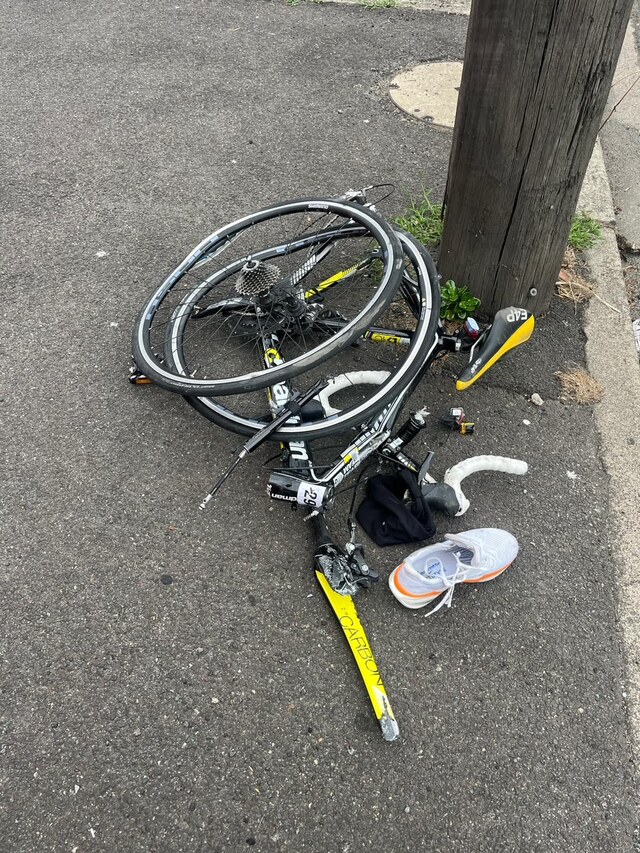Long-suffering rail passengers on northern and western lines still have some years to wait before there will be big improvements to services. Laura Little spoke to some of them who endure crowded, unreliable travel.
IT’S just before eight o’clock on a Wednesday morning and platform one at Laverton railway station is packed.
Commuters trying to make their way to work and school line the platform, three or four people deep in parts, waiting for their train.
It’s a particularly good day on the Werribee line, because so far no trains have been cancelled or delayed.
That’s a rarity for passengers on one of the network’s least reliable lines.
The latest Public Transport Victoria monthly performance figures show that 1.8 per cent of services on the Werribee line were cancelled in the 12 months from March last year.
Only the Stony Point (2 per cent) and the Frankston lines (2.2 per cent) were worse.
The figures also show that 13.4 per cent of services were delayed. The Pakenham line was the worst, with 18.7 per cent of services running late.
Werribee’s Mark Marenda makes the journey into North Melbourne by train once a week, never knowing if he will arrive on time.
‘‘There is a fair bit of cancellations,’’ he says, ‘‘and you have to wait and catch the next train, which can be annoying.
‘‘More trains have been added in the mornings recently, which means less time waiting between trains but [frequency] could still be improved.’’
For Marenda, it’s the evenings that are the worst.
Cancellations can leave passengers waiting more than 20 minutes for a train, and it will be overcrowded all the way from North Melbourne to Laverton.
Marenda desperately hopes more evening services will be added to the line once the Regional Rail Link is built and V/Line trains are removed from the suburban tracks.
It’s a hope shared by Footscray’s Liz Stedwell.
She catches the train from West Footscray to the city daily and, like Marenda, says the evening commute is the worst.
In the morning, trains run on the Sydenham line every 10 minutes, but at night it’s a different story.
In the first half of each hour, three trains depart the city at 10-minute intervals. In the second half, passengers are left to endure a 20-minute wait.
Punctuality on the line is also poor, further adding to passengers’ frustrations.
Between March last year and this, 13.4 per cent of services were late.
‘‘It’s not good enough,’’ Stedwell says. ‘‘The trains are not reliable and they are too congested.
‘‘There needs to be more frequent services and we shouldn’t have to wait until the Regional Rail Link is built to get them.’’
Stedwell used to catch the train from Footscray station but found the trains to be so busy she couldn’t get on them.
Now she drives out to West Footscray station where congestion is still a problem, but at least she can squeeze onto the train.
Stedwell and Marenda’s experiences are no different to those experienced by thousands of western suburbs residents daily.
Like their Sydenham and Werribee counterparts, travellers on the Craigieburn line have to contend with overcrowding.
They know they have a slim chance of finding a seat by the time the train reaches Essendon station.
They also know that at North Melbourne station, just five stops away, hundreds more passengers will try to push on to the train, crushing those already on board.
Passenger-load surveys by Public Transport Victoria last October show an increase in the number of passengers travelling on overcrowded peak-hour services.
The survey found that almost 28 per cent of morning peak services on the Craigieburn line were overcrowded, up from 22 per cent in October 2010.
In the evening, 23 per cent of services were overcrowded, an increase of 5 per cent on the previous year.
A train is considered to be overcrowded if it carries more than 798 passengers.
So, is there a way to make train services more reliable and to end the daily squeeze?
The state government and Public Transport Victoria believe there is, and it comes in the form of the Regional Rail Link.
The project will separate Melbourne’s metropolitan and country services by providing V/Line trains with their own tracks from the West Werribee junction to Deer Park and from Sunshine into the city.
The Regional Rail Link Authority says this will untangle the metropolitan and country rail networks, removing the bottlenecks at various points in the networks, particularly North Melbourne station.
‘‘Regional Rail Link will create capacity for regional services and free up much-needed space for additional services on the Werribee, Sunbury (Sydenham) and Craigieburn lines,’’ authority spokesman Simon Breer says.
Similarly, Premier Ted Baillieu says the project, which is now in its last stage of construction (Deer Park to West Werribee), will help Metro and V/Line move more people to more places, more often.
‘‘Upon completion there will be enough capacity for extra train services to move up to 9000 extra passengers across the network during peak times,’’ he says.
Metro is also hailing the link as a solution to the west’s transport problems, with chief executive Andrew Lezala recently promising Altona Loop passengers that the link would mean better timetables and improved services.
He says that once V/Line trains are taken off the Werribee line, Metro will have sufficient capacity to reverse timetable changes introduced last year, which forced Altona Loop passengers to change trains twice during off-peak to reach stations beyond Newport.
But, as promising as the link project sounds, it won’t be operational until 2016.
So how will the journey from the west into the city be improved in the meantime?
Public Transport Victoria spokeswoman Donna Watson says the department is trying to ease the squeeze by adding more than 1000 weekly services across the network.
And Lezala points to the new train timetable released in March as proof Metro is working to overhaul the network and improve services.
‘‘We expect to minimise the effects of disruptions for our customers by isolating lines to help avoid any flow-on effect of delays, and future stages [of the network overhaul] will see other lines operating independently from each other, minimising the impact of any service disruptions for our customers,’’ he says.
The new timetable resulted in three extra morning services on the Werribee line, departing from Laverton. It also introduced five extra evening services on the line, three of which terminate at Laverton.
The Sydenham and Craigieburn lines each received three new peak-hour services.
Watson says services on the Werribee line were further improved by increasing the frequency of peak services to provide trains every 11 minutes.
Passengers on the Sydenham lines will also see improved services once the Sunbury electrification project is complete, she says.
The project, which will extend the line from Watergardens to Sunbury, is expected to boost capacity by 3000 passengers a day and increase the number of peak services.
It will be completed this year.







